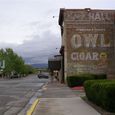« DFA Meetups Tomorrow . . . And Thursday | Main | DNC Hispanic Caucus Votes Overwhelmingly to Endorse Dean »
Wednesday, February 02, 2005
Higher Pay for Teachers Better Investment than Charters
From Judy Binder:
Response to Albuquerque Journal OP ED, “School Choice Helps Low-Income Families” by Micha Gisser and Sarah Hunt, January 6, 2005 (A slightly different version of this appeared in the Albuquerque Journal.)
Economist Micha Gisser, whose research generally covers agricultural economics, water rights and industrial organization, and Sarah Hunt, a UNM graduate in political science, have taken an assault on public education based on results gathered from the 2003 Terra Nova tests. Unfortunately, there is no data on how many children were tested, what subject matter was covered, or that their results might have been compared with other states that use the Terra Nova. Did a thorough analysis of their research show such startling results that all schools and all districts in New Mexico are hopeless? It is no great secret that students from minority or low economic neighborhoods do poorly on standardized tests; these tests are already culturally skewed, and testing results can be controlled.
The authors have analyzed the testing and cite “At least one study of the Milwaukee school choice program demonstrates that when compared to demographically similar students who remain in the public schools, low-income students show measurable gains in scholastic achievement after merely three years in a choice school.”
However, the results of the Milwaukee schools have been found by others to be lacking in scope and subject to interpretation.
The authors further suggest that to correct the imbalance in local test scores, brought on by residence in low-income neighborhoods, New Mexico ought to consider a school choice program.
This is a rather simplistic approach to a significantly complicated problem. In New Mexico, school choice within the public school system is an option for every student. It is called open enrollment. Unfortunately, school choice is unknown to many low-income families because some parents have not understood that this service is available and others are unable to read the documentation sent home. Having inquired from several classrooms of students in grades four through eight of the reading material found in their homes, we learned that most families, especially in low-income neighborhoods, did not subscribe to newspapers. However, children who have received vouchers are enrolled in private schools because their families—usually middle or upper class—are focused on academic success and have made the effort. Other parents may prefer their children to be safely educated close to home because a sibling or neighbor offers companionship. And others may feel self-conscious traveling into distant neighborhoods. In addition, studies have shown that the pressing need is for more qualified and better paid teachers. It is also important to note that parents and taxpayers would have to share the burden of supporting two school systems, public and private.
As an economist, Dr. Gisser has equated students, teachers, and administrators with widgets, assembly lines, and auto-ejection. If a widget is flawed, it is tossed on the trash heap. When a child comes through the system safe and sound, we bestow a diploma; those children who cannot make progress must still find a place in society.
Widgets, like dollars, have no feelings, no emotions, and no need for special attention. In APS we have 87,000 students and 10,000 teachers and administrative personnel, each of whom deserves proper compensation and respect.
From an educational forum co-sponsored by the Pew Charitable Trust and Georgetown University, Stanford Professor of Education and Economics Martin Carnoy, argues that “close examination of several existing voucher programs in the United States and abroad reveals that the academic gains for struggling students and schools are marginal at best, and often simply non-existent.
In addition, more and more data reveal that children educated in charter schools "do no better in math and reading than their peers at regular public schools...” (Michael Dobbs, Washington Post, Albuquerque Journal, Dec. 2004).
In conclusion, Gisser and Hunt lack the necessary background and research data to be able to come to the conclusion that poor kids would be better served by private schools.
What has actually happened? “A Nation at Risk,” published in 1983, indicated that “education is the major foundation for the future strength of this country;” [and] “education occupied first place among 12 funding categories considered in the survey—above health care, welfare, and military defense and that survey respondents ranked education first among categories including health care, defense and welfare.
Sadly most politicians only pay lip service toward improving education. We believe that it is economically productive to make teachers’ salaries commensurate with those of business leaders and other professionals in order to keep smart, dedicated, and powerful teachers in the classroom. Students who receive a first-class education will earn higher salaries. It is likely that we will need their contributions to support us all in our old age.
Judith Binder, Substitute Teacher, Albuquerque Public Schools
Julia Rosa Lopez-Emslie, Professor Emerita of Education, ENMU
February 2, 2005 at 09:49 AM in Current Affairs, Local Politics | Permalink














































